You may have heard the phrase “mission statement” recently. Maybe you’ve heard it a million times before, or perhaps you just encountered it when learning about creating a business plan. Another phrase that comes up often is “vision statement.” If you are confused about what these are, and why you might need one or the other, then don’t worry – you are not alone.
Let’s start by just explaining what they are and looking at some examples.
Where do you envision yourself?
I like to say that a vision statement is where you are going, and a mission statement is how you are going to get there. Think of a vision statement as a change you hope to see in the world. The mission statement is the way you will make that change. Another way to put it is that a vision is your “why”. Why are you starting this business as opposed to a million other kinds of business? What is driving you? The mission statement is the how. It is the process that will help you achieve your vision.
Let’s look at a few examples. First, an imaginary lemonade company called FreshAde.
Vision: “A world where people drink no soda and are refreshed by healthier drinks.”
Mission: “To offer a compelling alternative to prepacked soda, by producing delicious, fresh lemonade made entirely with organic ingredients.”
For something more inspiring, let’s go look at a real example. Below is Google’s vision statement:
Vision: “To provide access to the world’s information in one click.”
This is what they want to achieve — a future where anyone can get access to the world’s information in a single click. Presumably using Google products! Now how will they get there? That’s in their mission statement:
Mission: “To organize the world’s information and make it universally accessible and useful.”
So their mission is to make information accessible and useful – that’s the how. And they are doing this so that anyone can get access to it with just a click.
Great mission and vision statements may be short and to the point:
American Lung Association
Vision: “A world free of lung disease.”
Mission: “To save lives by improving lung health and preventing lung disease.”
But they can also be wordy where appropriate:
Vision: “Whole Foods, Whole People, Whole Planet.”
Mission: “Whole Foods Market is a dynamic leader in the quality food business. We are a mission-driven company that aims to set the standards of excellence for food retailers. We are building a business in which high standards permeate all aspects of our company. Quality is a state of mind at Whole Foods Market.”
So what’s the point, anyway?
I’ve seen people ignore vision and mission statements and do just fine. I’ve also seen organizations spend months and many tens of thousands of dollars crafting the perfect two sentences, only to continue to make the same exact mistakes they’ve made for years. These are useful tools when done right, and time wasters when not.
A mission statement should not be a goal in itself. If you put a lot of effort into writing something that just gets forgotten then you would have been better off binge-watching Rick and Morty on TV. There are three reasons to go through the effort:
1) To figure out for yourself what your company is about
2) To be able to evaluate the choices your company could make and determine whether they fit into the goals you have. For example, it wouldn’t make sense for Whole Foods to start offering junk food, even though it might make money selling it. A bad choice can conflict with how people see your company, and lead you down the wrong path.
3) To help you to craft the messages you need for customers, new staff, and potential investors. When your statements are in order, they help ensure everyone in your organization agrees what it is about. And they can help you to figure out what you need to communicate to people who don’t know much about you.
Ok, I want one – how do I start?
Let’s begin with the vision statement. Usually we start businesses with an idea – for example, I want to sell dog biscuits. I recommend you start from the other side – why do you want to sell dog biscuits? Let’s dig down until we can uncover the vision of the world that is driving you. There is an exercise called “the five why’s” which can be quite helpful. Pretend you are a young child repeatedly asking “why” to every answer. For example:
1) Why are you starting your Woofsters Cookies?
“I want to sell dog biscuits”
2) Why dog biscuits?
“I like dogs and I like baking. I like dogs because they are friendly and I want to bake something for them that they will enjoy.”
3) Why do you want to bake things for dogs?
“They deserve yummy, healthy treats”
4) Why do you think dogs deserve yummy, healthy treats?
“Because most dog treats are not good for them and I think people will like to give their dogs fresh biscuits that I will bake.”
5) Why do you care that most dogs treats are not good for the dogs?
“I want dogs to live longer and be healthier.”
So in five questions we were able to hit the bottom and find the root of a vision. Helping dogs to live longer and be healthier. The final vision statement might be “Woofsters Cookies vision is to provide pet owners with treats that will help their pets live longer, healthier lives.”
After you have a vision statement, next construct a mission statement. The mission statement should connect your business activities to the vision. How will what your business does bring out about the vision? A possible mission for this imaginary company might be:
“Woofsters Cookies mission is to become a leading baker of healthy dog biscuits in North Carolina and to increase the awareness of alternative pet treats.”
Final thoughts
There is no right or wrong on mission and vision statements. Tesla, for example, seems to have flipped them, having its mission statement read more like a vision statement, and vice versa. None of this matters. The statements are tools for you, and if they are useful, then anything goes. If they are beautiful but useless sentences then don’t bother. The point is to make sure whatever you put together is helpful to you going forward.








